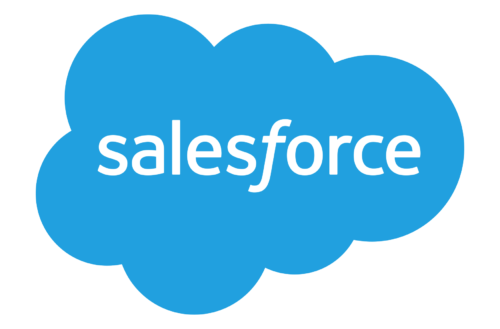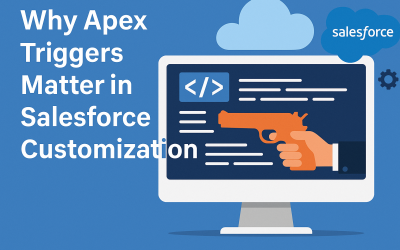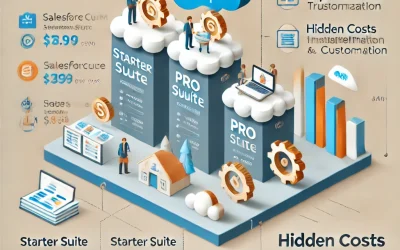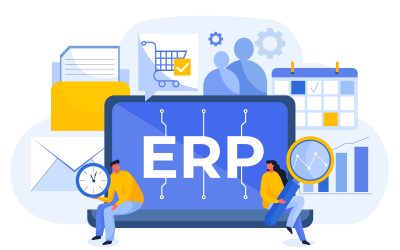In this comprehensive guide, we will delve into the intricacies of Salesforce implementation, covering key aspects such as project planning, cost considerations, and best practices. Whether you’re embarking on your first Salesforce implementation or looking to optimize an existing setup, this article will provide valuable insights and practical guidance to ensure a successful and efficient implementation process.
From understanding the fundamentals of Salesforce implementation to crafting a detailed project plan and navigating the complexities of cost management, we’ll explore the essential elements that contribute to a seamless deployment of Salesforce CRM.
Whether you’re a business owner, project manager, or Salesforce administrator, this guide is designed to equip you with the knowledge and strategies needed to drive success in your Salesforce implementation journey.
What is Salesforce Implementation?

Salesforce implementation involves deploying its primary product, the CRM (customer relationship management) system, to streamline key business activities and communication. This platform integrates the three primary types of CRM products – operational, analytical, and collaborative – making it the leading CRM solution available.
Importance of a Well-Executed Implementation
If a Salesforce implementation is not well executed, it can lead to various challenges and negative consequences for the organization. Here are some potential issues that may arise:
- Misalignment with Business Objectives: Without proper planning and alignment with business objectives, the implemented solution may not effectively address the organization’s needs. This can result in a system that does not deliver the expected benefits or fails to support key business processes.
- Low User Adoption: Poorly executed implementations often result in low user adoption rates. If the system is not intuitive, lacks adequate training, or does not meet user needs, employees may resist using it, leading to underutilization and wasted resources.
- Inefficient Processes: Inadequate analysis and optimization of processes can lead to inefficient workflows and business processes. This may result in manual workarounds, redundant tasks, and decreased productivity, negating the intended efficiency gains of the system.
- Data Integrity Issues: Data migration and management are critical components of a Salesforce implementation. If data is not accurately migrated, cleansed, or maintained, it can lead to data integrity issues, including inaccuracies, duplicates, and inconsistencies, undermining the reliability of the system.
Key Components of a Successful Salesforce Implementation

Following are the Key Components of a Successful Salesforce Implementation:
- Clear and Unambiguous Requirements: Define requirements that are explicit and leave no room for interpretation. This ensures that the implemented solution aligns closely with stakeholders’ expectations and minimizes the risk of discrepancies between reality and expectations.
- Stakeholder Buy-in: Engage stakeholders early in the process to gain their buy-in and foster collaboration. The more stakeholders are involved and invested in the solution, the more likely they are to provide valuable feedback and contribute to the project’s success.
- Establish Time Requirements: Set clear time requirements and expectations from business/end users throughout the implementation process. Involve them consistently to provide input, feedback, and clarification, ensuring that the solution stays aligned with their needs and vision.
- Thorough Testing: Testing is a critical component of any successful implementation. Allocate sufficient time and resources to thoroughly test the functionality against the defined requirements. This helps identify and address any issues or errors before deployment, ensuring a smooth and error-free implementation process.
Creating a Salesforce Implementation Plan
Implementing Salesforce is widely recognized as a complex endeavor, often challenging even the most seasoned teams. Statistics suggest that CRM implementation projects have a failure rate ranging from 30% to 70%. However, the success of your CRM implementation project hinges on how you approach planning, execution, and training.
While it’s feasible to implement Salesforce internally, investing in a knowledgeable Salesforce implementation partner tailored to your industry can yield significant benefits. Official Salesforce implementation partners possess expertise to optimize every phase of the project, from planning and development to transition and training. This not only saves time and minimizes frustration but also provides invaluable insights and opportunities not otherwise accessible.
There are three primary Salesforce implementation approaches:
- In-house Implementation:
This approach involves implementing Salesforce entirely internally, which is rare and typically undertaken by smaller or mid-sized organizations. While it offers low upfront costs and encourages team learning, it carries the risk of technical debt and extended timelines due to the learning curve.
- Third-party Implementation Partners:
Numerous Salesforce implementation partners offer end-to-end services, aiding in CRM planning, training, and maintenance. Although this option provides expertise and efficiency, selecting the right partner can be challenging, and ongoing support may rely heavily on third-party assistance.
- Hybrid Implementation Approach:
A hybrid approach combines internal efforts with external support. Organizations confident in handling certain aspects of implementation opt for this approach to balance expertise and cost-effectiveness. While it offers flexibility and cost savings, it requires careful delineation of responsibilities between internal and external teams.
While there’s no one-size-fits-all approach to Salesforce implementation, partnering with a suitable implementation provider can streamline the process, enhance customization, and ensure successful adoption.
Salesforce Implementation Checklist
A typical Salesforce Implementation adheres to the following Checklist:
- Identifying Stakeholders
- Establishing High-level Objectives
- Requirement Gathering
- Prioritizing Requirements
- Development
- Testing and Incorporating Feedback
- Preparing for Deployment (change management)
- Deployment
How to do Salesforce CRM Implementation?
A typical Salesforce Implementation adheres to the following framework:
- Identifying Stakeholders: Begin by identifying the key individuals and teams with a vested interest in the project. Define roles such as Business/End Users, Super Users, Project Manager, and Decision Maker to ensure clear communication and accountability throughout the implementation process.
- Establishing High-level Goals: Engage stakeholders to determine the overarching objectives of the project. Address questions such as defining success, identifying pain points, pinpointing inefficient processes, and highlighting desired features. This phase aims to prioritize initiatives based on their impact and ensure alignment among stakeholders’ visions for the project’s success.
- Collecting Requirements: With a shared vision in place, it’s time to outline the specific functionalities needed to support the desired outcome of the Salesforce implementation. Before delving into this phase, it’s crucial to understand how to define requirements effectively. Requirements should be clear, concise, testable, and consistent in terminology. They should avoid conjunctions and involve input from all stakeholders, with subsequent group review to ensure adherence to established standards.
- Prioritizing Requirements: With requirements gathered, the next step is to prioritize them. Due to resource and budget constraints, it’s essential to identify must-have, should-have, and nice-to-have requirements. Must-haves are non-negotiable for go-live, while should-haves offer significant benefits but can be worked around with manual effort. Nice-to-haves are convenient but not critical. Once prioritized, the technical team or Salesforce partner estimates the effort for each requirement and groups them into larger modules for easier management during the build phase, known as Epics. Estimating requirements involves stating assumptions rather than specifying solutions, and it’s crucial to align expectations with the Salesforce partner regarding this task.
- Development: With requirements prioritized, it’s time to bring them to life. As the implementation progresses, it’s crucial to identify dependencies between requirements within Epics. For example, Lead custom fields may need to be built before adjusting the Page Layout. While you may not be directly involved in the building process, discussions with consultants and developers are essential. Topics to discuss include refreshing sandbox orgs, documentation provided by the partner, and preparing for deployment from day one.
- Testing and Implementation of Feedback: Once functionality is built or a proof of concept is in place, it’s crucial to review with the business team and your implementation partner to ensure alignment with expectations. Request a visual demo and record it for reference. Pay attention to the flow and how components connect. If the demo is lengthy, take breaks to retain information. Take detailed notes and request a manual with instructions.
- Prepare for Deployment: As the technical aspects are finalized, it’s crucial to ensure a smooth transition for all stakeholders. Inform end-users of upcoming changes with multiple reminders and clear timelines. Highlight systems being phased out and new processes with Salesforce integration. Training plays a key role in user adoption:
- Admin Training: Documentation and guidance for system maintenance and support.
- User Training: Direct training from the Business Analyst or Project Owner in a lecture-style format.
- Train-the-Trainer: Super Users trained to conduct sessions for their colleagues, including hands-on components for practical learning.
- Go-Live: The culmination of your Salesforce implementation journey is here! As you deploy, follow the pre-deployment, deployment, and post-deployment steps meticulously. Here are some key tips for a successful deployment:
- Validate your package a few days before deployment to catch any errors.
- Check email deliverability settings in Setup to avoid disruptions during deployment.
- Choose a deployment window that minimizes impact on users.
After deployment, perform a quick run-through of key functionalities to ensure everything works as expected.
Benefits of Implementing Salesforce CRM
The implementation of Salesforce CRM comes with a lot of benefits , some of which are:
1. Save Time and Money With Automation:
- CRMs like Salesforce enable automation of various processes, saving significant time and effort.
- Time-saving benefits include automated data entry, freeing up resources for other tasks and business growth.
- Automation reduces manual labor, saving costs associated with staff salaries.
- Lead scoring and assignment rules automate processes like lead qualification and assignment to specific sales reps.
- Automated tasks such as lead scoring and assignment rules streamline operations and improve efficiency.
2. Track Leads and Prospect Information:
- Salesforce CRM allows tracking of leads and prospect information.
- Benefits include monitoring lead generation, conversion, and lead quality.
- Qualify prospects based on needs and objectives to prioritize sales efforts.
- View lead details, contact history, and progression stages for efficient sales management.
- Utilize CRM to track data like contact information, sales conversations, and lead statuses.
- Prioritize sales efforts and focus on promising leads for improved sales outcomes.
3. Increase Lead Qualification With Email Tracking:
- Salesforce enables lead qualification through email tracking.
- Monitor all emails sent to leads within the system.
- Track lead progress and identify prospects needing more attention.
- Analyze email interactions like opens and link clicks to gauge prospect interest.
- Customize outreach based on insights from lead-specific behaviors.
4. Manage Customer Relationships:
- Salesforce provides an overview of all customer interactions.
- Stay organized by viewing each customer’s last interaction.
- Track customer service interactions and issue resolution times.
- Store customer contact information and track every interaction conveniently.
- Integrate Salesforce CRM with point-of-sale systems for insights into marketing campaign performance.
5. Estimate Sales Proposals With Accuracy:
- Use Salesforce CRM’s forecasting capabilities for accurate pricing decisions.
- Track customer information to create precise sales proposals.
- Win more sales by providing accurate quotes based on detailed data.
- Track customer responses to sales proposals for effective follow-up.
- Understand and adapt proposals based on customer feedback and needs.
Salesforce CRM Implementation Project Plan
A typical Salesforce CRM Implementation plan follows the following structure:
Creating a CRM Data Model:
Before diving into Salesforce implementation, it’s crucial to establish a solid data model that outlines how information will flow within your system. This model defines the structure of data elements such as objects, fields, and records, essential for supporting your business operations.
Building a CRM Prototype:
A prototype serves as a preliminary draft of your CRM solution, allowing stakeholders to provide feedback and adjustments. It visualizes your proposed solution and represents the steps involved in your business processes, ensuring alignment before the actual implementation begins.
Importing Your Data:
Data import is a pivotal step in ensuring data integrity and relevance. Before initiating the import process, conduct a thorough data audit to identify and rectify inconsistencies. Strive for a balance between data customization and adherence to standard Salesforce objects for a cohesive data ecosystem.
Integrating With Other Tools:
Your CRM is likely part of a broader ecosystem, necessitating integration with other platforms or applications. An experienced Salesforce implementation partner can assist in setting up seamless integrations, including complex API integrations and legacy system integrations, to ensure interoperability.
Customizing the CRM Solution:
Tailoring your CRM to your specific business needs is essential for optimal performance. Customize your platform with personalized fields, layouts, and other requirements, keeping customization pragmatic and aligned with evolving business processes.
Testing Your Salesforce CRM:
Ensure that your Salesforce CRM meets functional requirements through comprehensive testing. Engage quality assurance teams in user acceptance testing (UAT) to validate system functionality across various scenarios, ensuring it aligns with user needs and workflow requirements.
Understanding the Salesforce Interface & Training Your Employees:
Prepare your staff for the transition by providing tailored training sessions aligned with practical business processes. Utilize resources like Salesforce’s Trailhead for hands-on learning and create customized training materials for organization-specific use cases.
Collecting Feedback From End Users & Making Necessary Changes:
Establish a systematic feedback loop to gather input from end-users, categorize feedback, and prioritize necessary changes. Regularly communicate updates based on user input to foster collaboration and ownership of the platform.
Launching:
Plan a strategic rollout of your CRM implementation, providing accessible support channels and thorough documentation. Incorporate user feedback into any last-minute adjustments, and proactively communicate changes to manage user expectations effectively.
Encouraging End User Adoption & Post-launch Support:
Support end-user adoption by leveraging resources such as Trailhead courses, account managers, and community events. Address post-launch issues promptly and encourage continuous learning and engagement to maximize the platform’s benefits.
Salesforce Implementation Costs
The cost of implementing Salesforce varies based on factors such as complexity, size, customization level, user count, and other considerations. It is not a fixed cost , it changes even with the slightest customizations that you opt for .
On average, for a mid-sized business, the cost typically falls between $75,000 to $200,000. However, for larger enterprises with more intricate requirements, the cost can significantly escalate, reaching into the thousands or even millions of dollars.
Factors Affecting Implementation Costs
Determining Salesforce implementation costs involves various factors, including the complexity of customization, the scope of integration, data migration requirements, and the level of support needed. Here’s a breakdown of potential costs:
Licensing Fees:
Salesforce offers different editions with varying features and pricing tiers, such as Essentials, Professional, Enterprise, and Unlimited. The cost depends on the edition and the number of user licenses required.
Implementation Services:
This includes consulting fees charged by Salesforce implementation partners or consultants for planning, customization, configuration, and deployment of Salesforce according to your business needs.
Customization and Development:
Additional costs may arise for customizing Salesforce to match your specific business processes, workflows, and branding. This includes developing custom objects, fields, workflows, reports, and dashboards.
Data Migration:
If you’re migrating data from legacy systems or other CRM platforms to Salesforce, there may be costs associated with data extraction, cleansing, mapping, and importing into Salesforce.
Integration:
Integrating Salesforce with other business systems, such as ERP, marketing automation, or accounting software, may require additional development effort and third-party integration tools.
Training and Change Management:
Investing in user training and change management programs ensures successful adoption of Salesforce within your organization. Costs may include training materials, workshops, and ongoing support.
It’s essential to work closely with your Salesforce implementation partner or consultant to understand the specific requirements of your project and receive a detailed cost estimate tailored to your business needs.
Salesforce Implementation Best Practices
A successful Salesforce implementation hinges on agility, transparency, and a systematic approach. Engaging your employees throughout the process is crucial, as their input is instrumental in crafting a platform that resonates with users.
Here are four best practices for smooth salesforce implementation:
- Employ a certified Salesforce administrator
Hiring a dedicated Salesforce admin is essential for ongoing system maintenance and support. This role involves managing the platform, assisting teams with feature implementation, and staying abreast of Salesforce updates and functionalities.
- Maintain flexibility
Expect changes to your implementation plan as you gain insights and possibly engage with external partners. Involve employees from various departments and levels in the planning phase to minimize surprises and resistance to change. Adapt your strategy based on valuable feedback from potential users.
- Prioritize communication
Keep all stakeholders informed about the implementation progress through regular updates. Engage employees early on to foster a sense of inclusion. Encourage feedback from end-users to tailor the CRM platform to their needs and enhance employee engagement.
- Provide diverse training options
Recognize that individuals have varying learning styles and preferences. Offer a range of training resources such as classroom sessions, apps, e-books, gamified learning, official Salesforce training, blogs, and podcasts. Leveraging these resources ensures comprehensive user training and promotes effective CRM utilization.
Conclusion
In conclusion, Salesforce implementation is a multifaceted process that requires careful planning, execution, and ongoing support to ensure success. From defining stakeholders and high-level goals to customizing the CRM solution and encouraging end-user adoption, each step plays a crucial role in driving business transformation and maximizing the benefits of Salesforce.
By following salesforce implementation best practices such as involving employees in the process, hiring certified Salesforce administrators, prioritizing communication, and offering diverse training options, organizations can navigate the complexities of implementation more effectively.
Moreover, understanding the key components of a successful Salesforce implementation, estimating costs, and embracing agile methodologies can further enhance the likelihood of a successful rollout.
Ultimately, Salesforce implementation is not just about deploying a CRM system—it’s about empowering teams, optimizing processes, and driving business growth. With the right approach and commitment to continuous improvement, organizations can leverage Salesforce consulting services by Saisatwik to its fullest potential and achieve their strategic objectives.




0 Comments